Why you can trust Tom's Hardware
Protection Features
Check out our PSUs 101 article to learn more about PSU protection features.
|
OCP (Cold @ 29°C) |
12V: 174.4A (135.03%), 11.926V |
|
OCP (Hot @ 45°C) |
12V: 174.2A (134.87%), 11.931V |
|
OPP (Cold @ 30°C) |
2093.46W (135.07%) |
|
OPP (Hot @ 46°C) |
2091.84W (134.96%) |
|
OTP |
✓ (150°C @ 12V Heat Sink) |
|
SCP |
12V to Earth: ✓ |
|
PWR_OK |
Proper operation |
|
NLO |
✓ |
|
SIP |
Surge: MOV |
OCP at 12V and 3.3V and OPP are correctly set here. On the other hand, the OCP triggering point is set quite high at 5V. All other protection features are present and operate well.
DC Power Sequencing
According to Intel’s most recent Power Supply Design Guide (revision 1.4), the +12V and 5V outputs must be equal to or greater than the 3.3V rail at all times. Unfortunately, Intel doesn't mention why it is so important to always keep the 3.3V rail's voltage lower than the levels of the other two outputs.
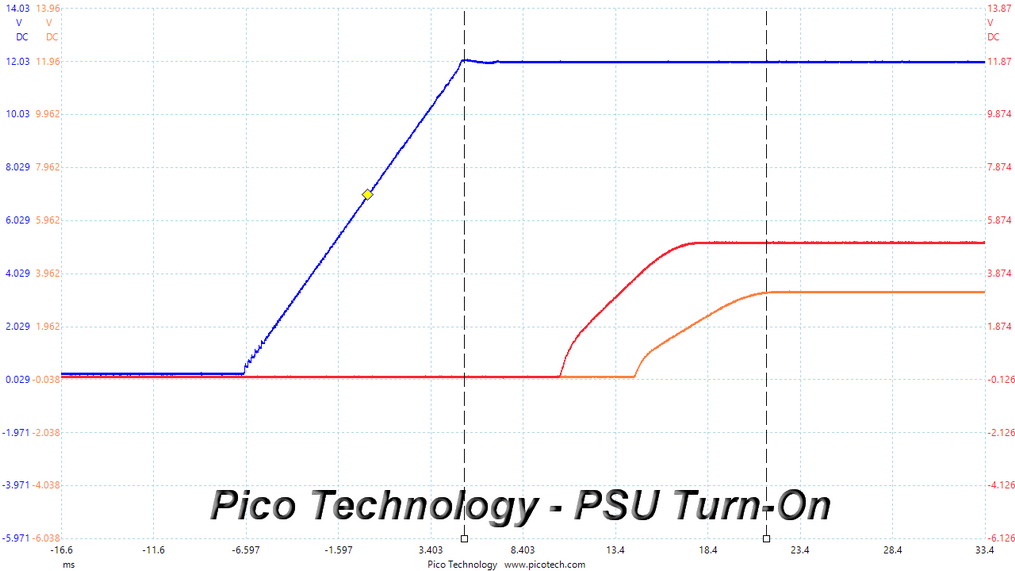
DC Power Sequencing Scope Shots
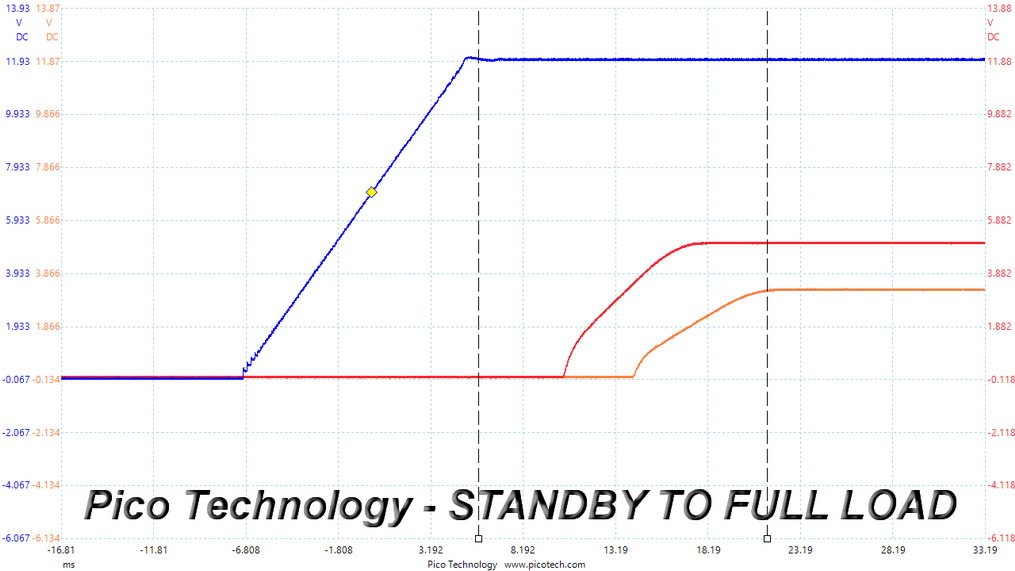
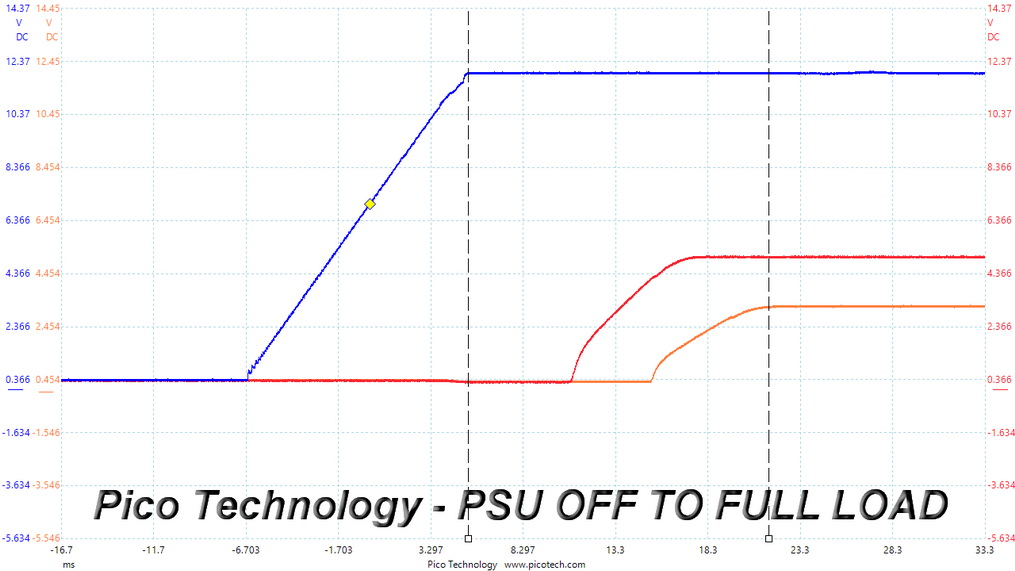
The Thermaltake ToughPower TF1 1,550W's 3.3V rail is always at a lower voltage level than the other two rails (12V and 5V), as the ATX spec requires.
Cross Load Tests
To generate the following charts, we set our loaders to auto mode through custom-made software before trying more than 25,000 possible load combinations with the +12V, 5V, and 3.3V rails. The deviations in each of the charts below are calculated by taking the nominal values of the rails (12V, 5V, and 3.3V) as point zero. The ambient temperature during testing was between 30 to 32 degrees Celsius (86 to 89.6 degrees Fahrenheit).
Load Regulation Charts
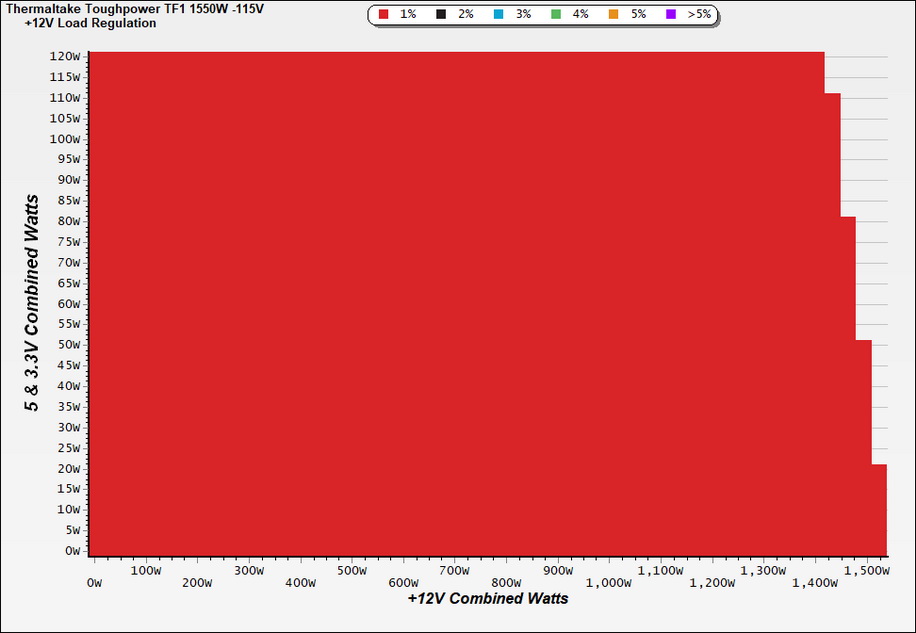
Load Regulation Graphs
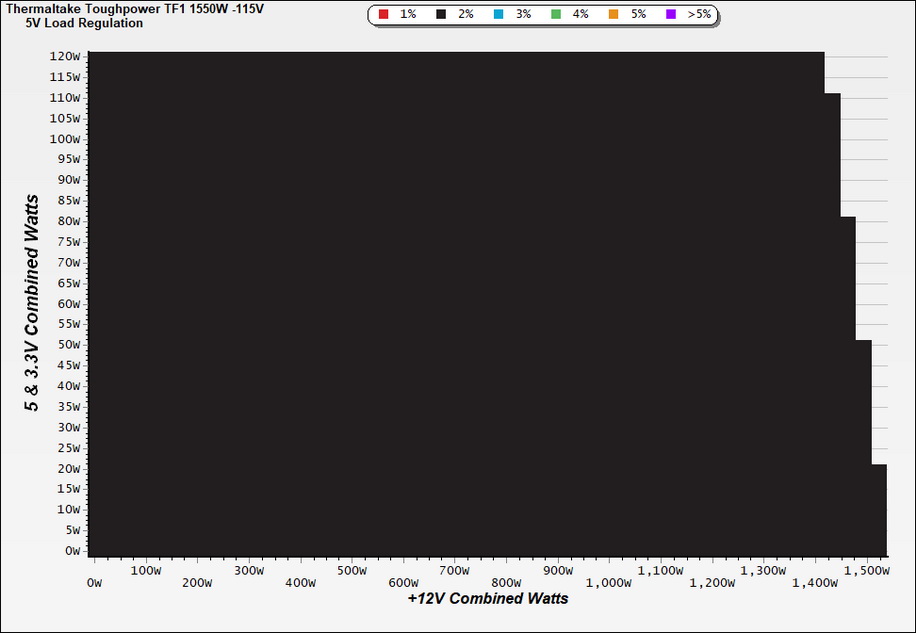
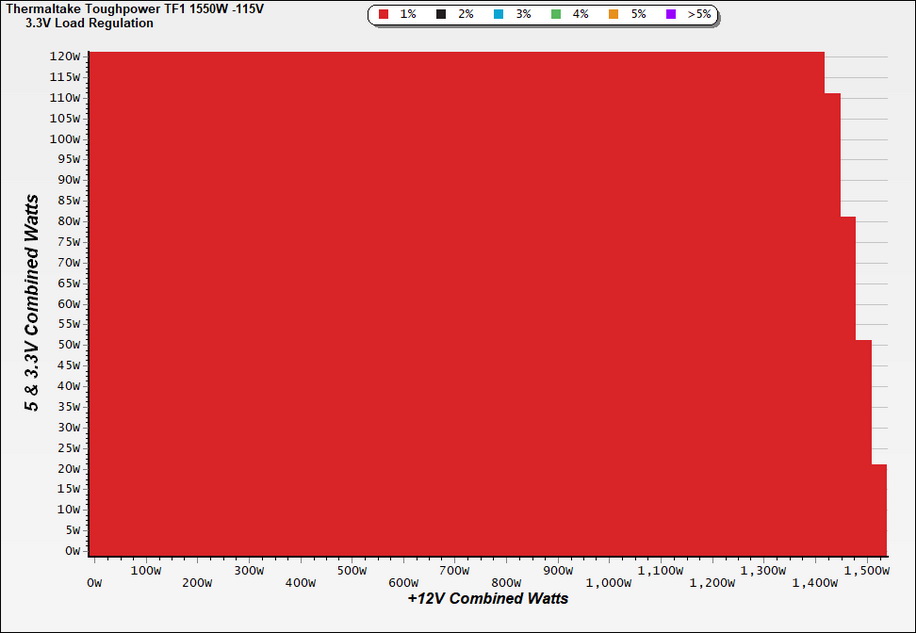
Efficiency Graph
Ripple Graphs
The lower the power supply's ripple, the more stable the system will be and the less stress will also be applied to its components.
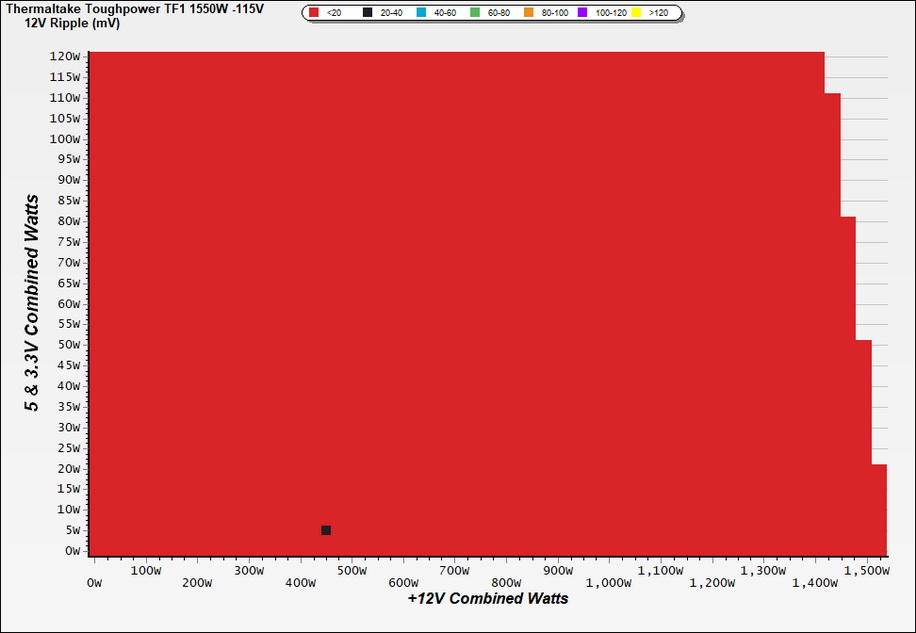
Ripple Suppression Graphs
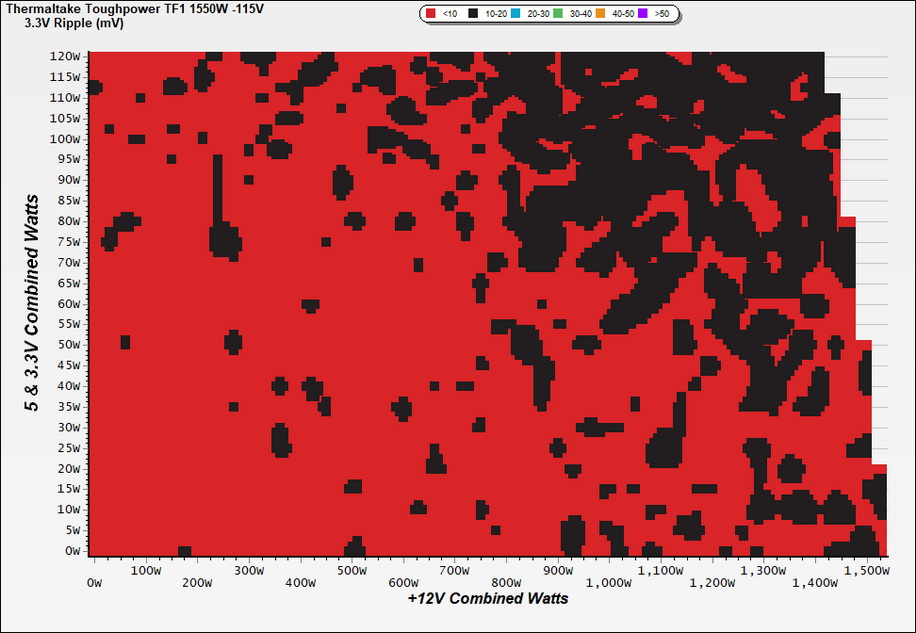
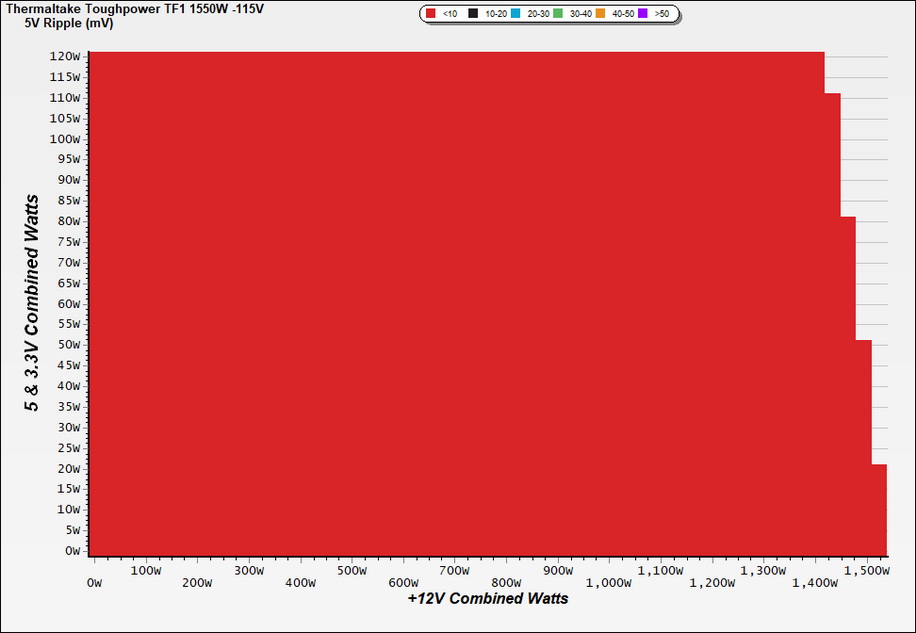
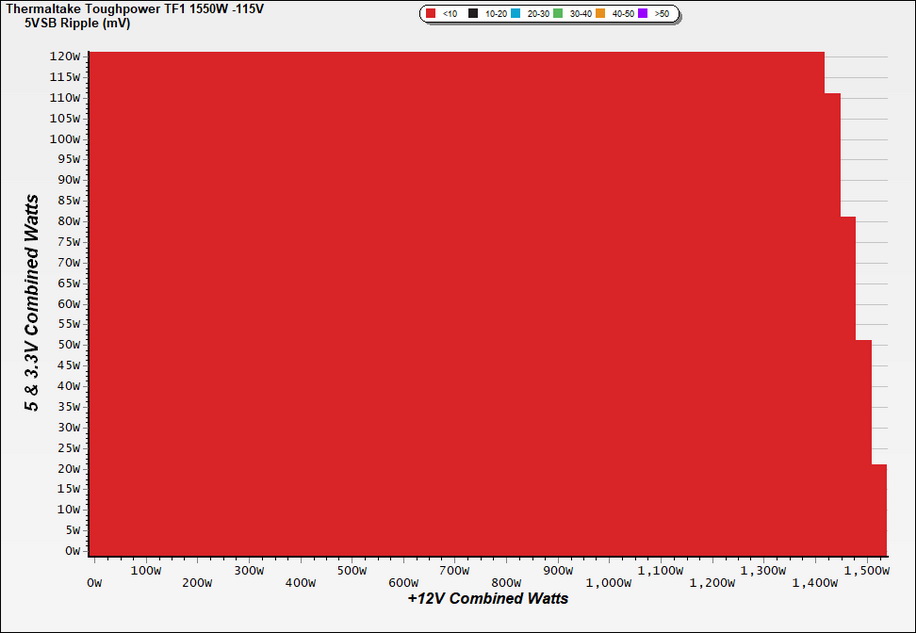
Infrared Images
To take a PSU's temperature, we apply a half-load for 10 minutes with the PSU's top cover and cooling fan removed before taking photos with a modified FLIR E4 camera able to deliver an IR resolution of 320x240 (76,800 pixels).
Get Tom's Hardware's best news and in-depth reviews, straight to your inbox.
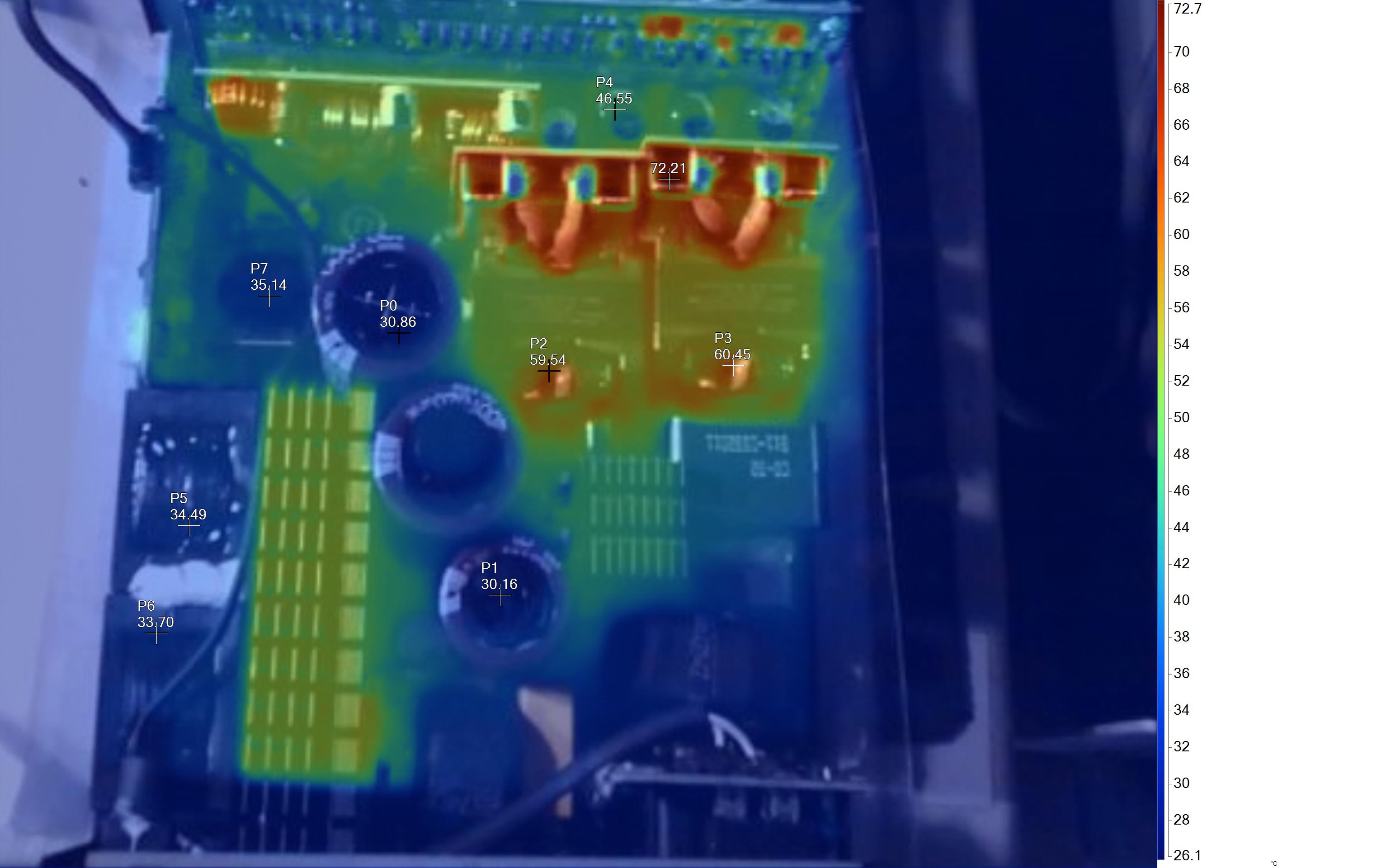
IR Images
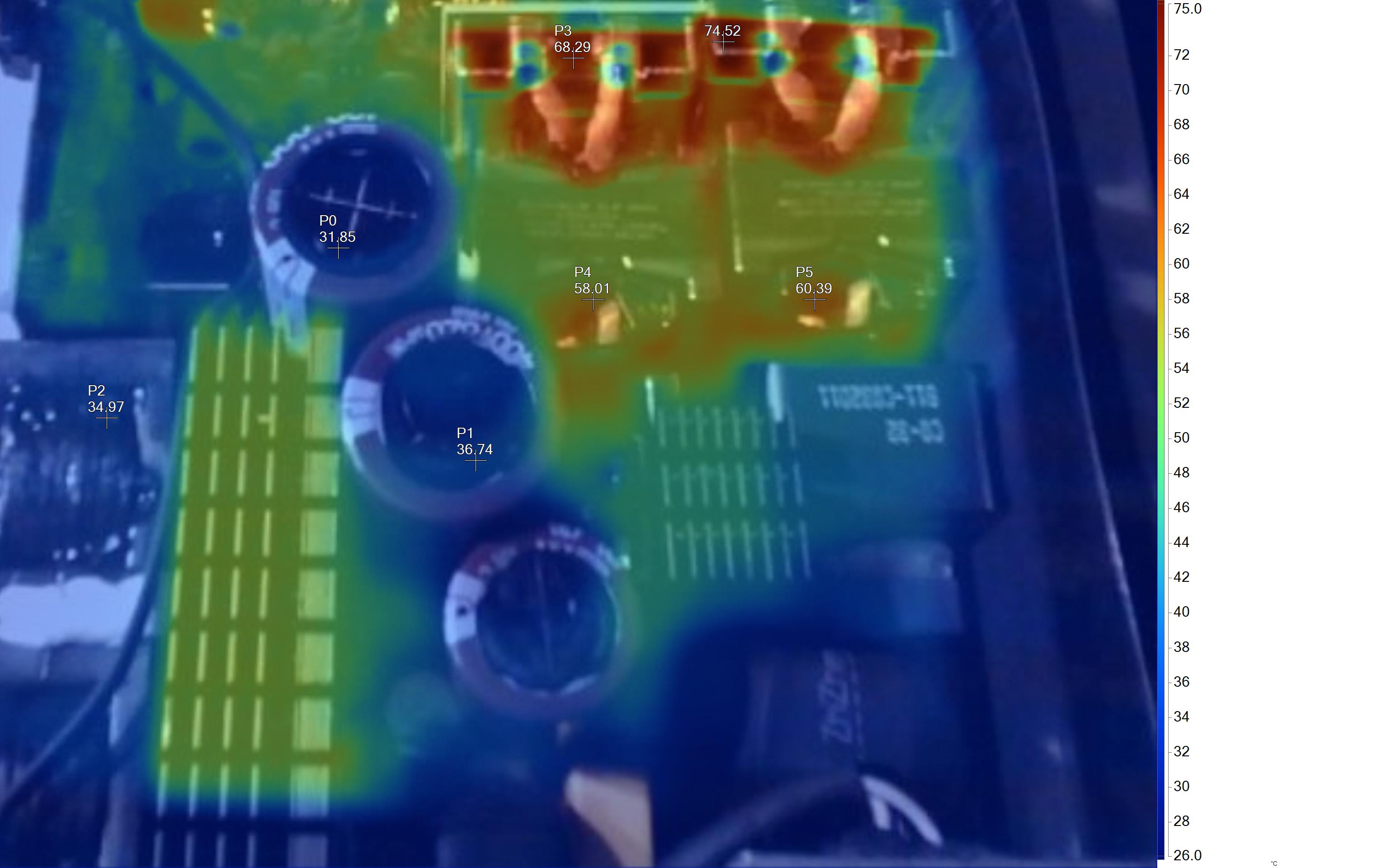
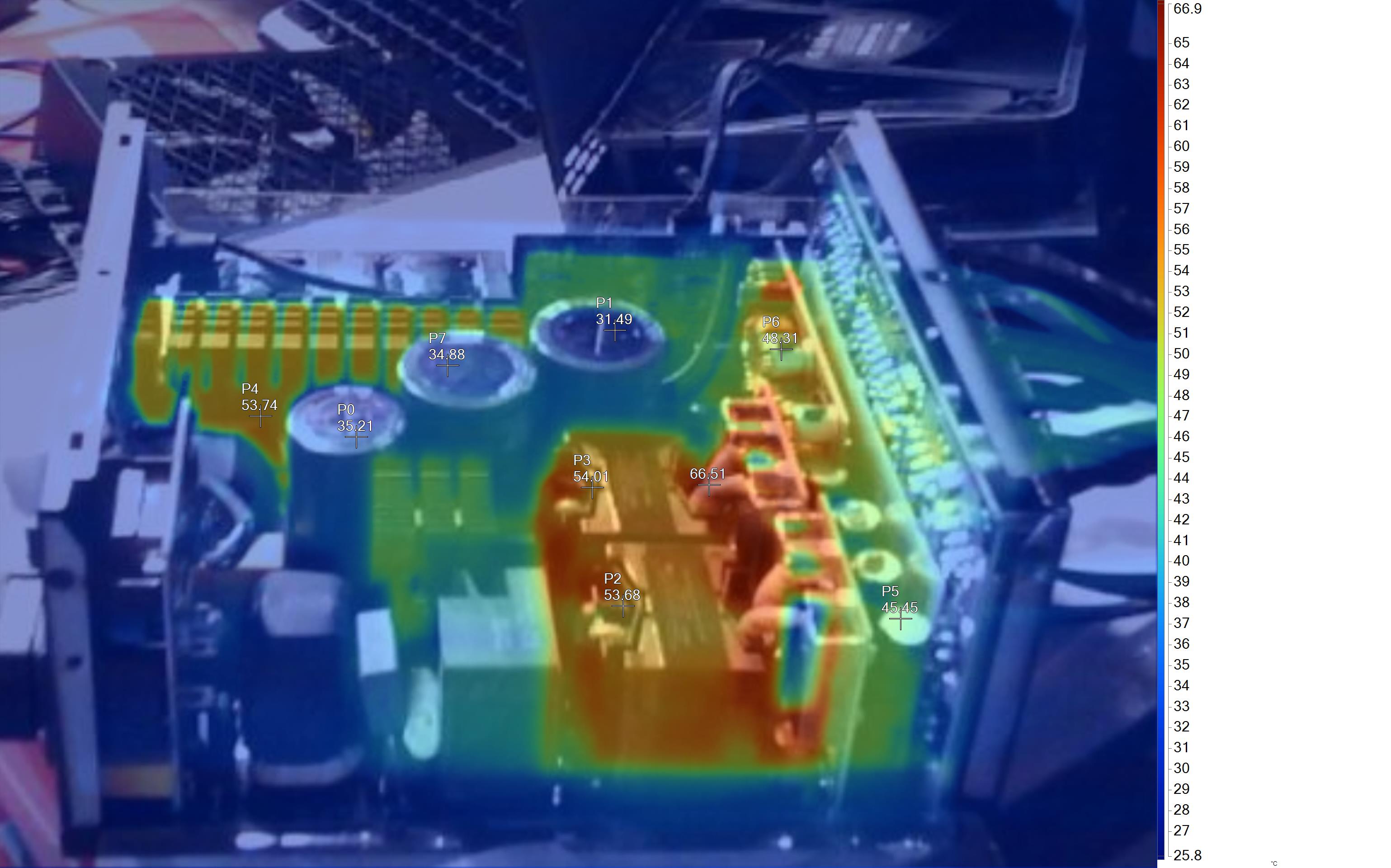
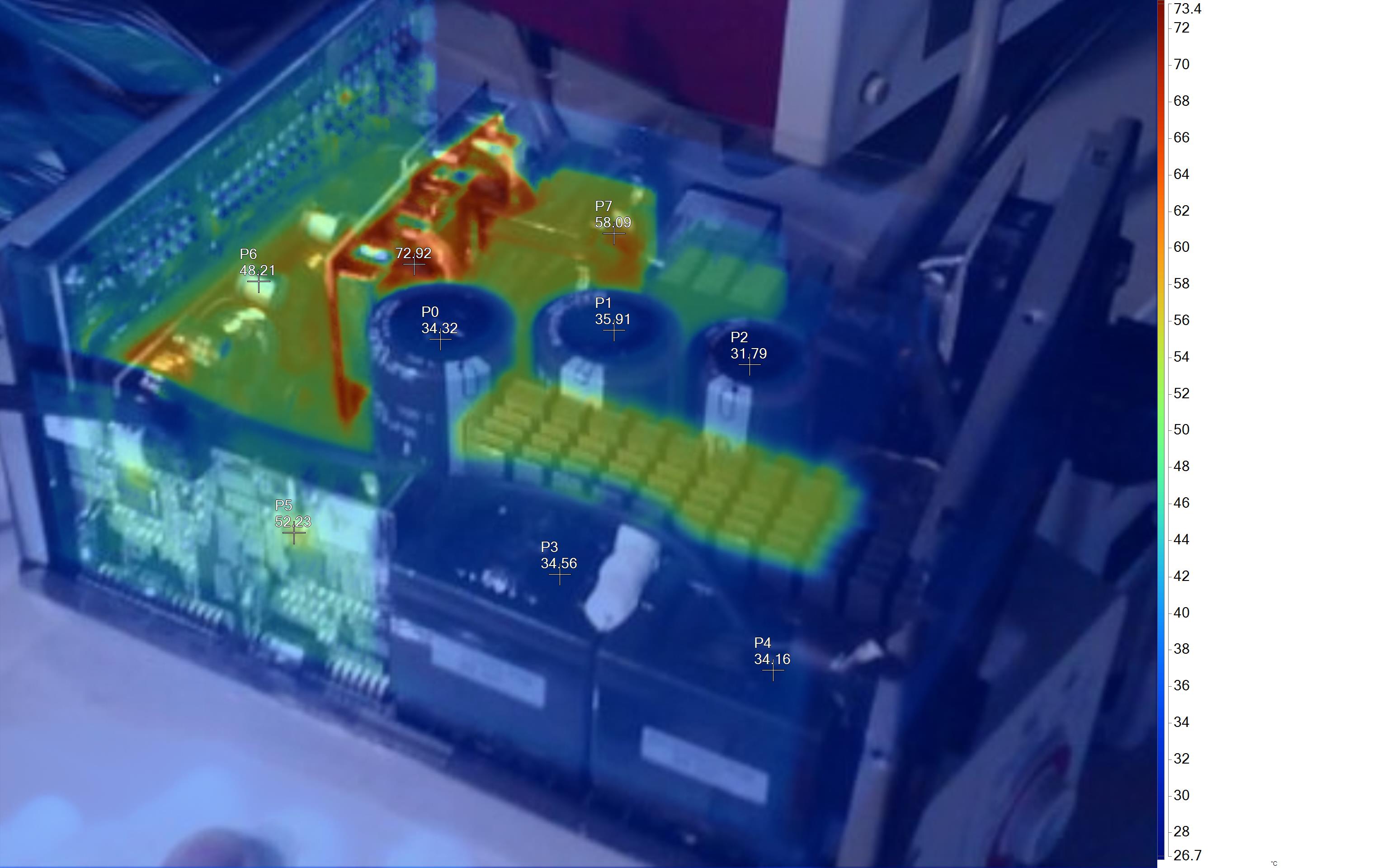
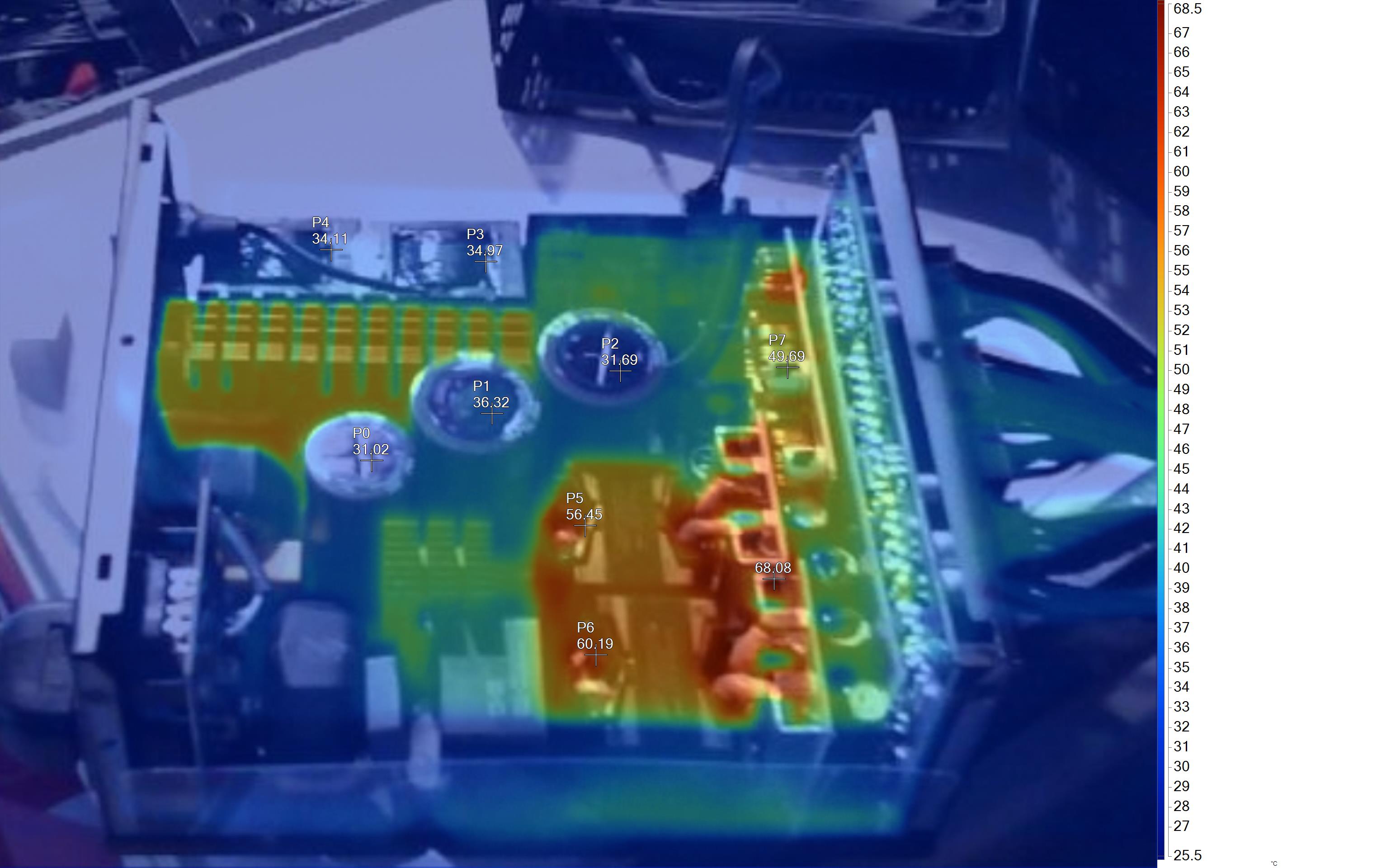
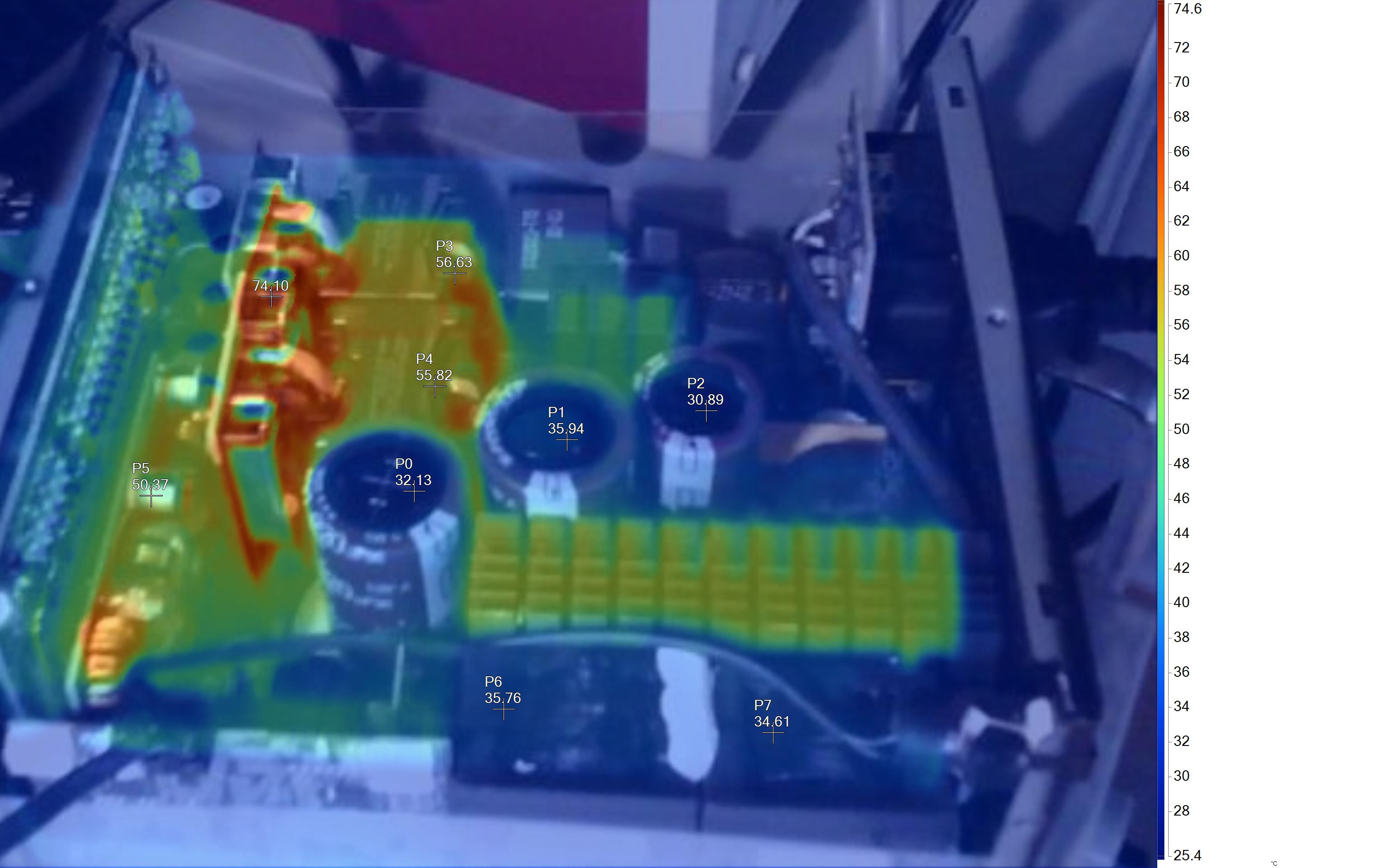
With the cooling fan out of the equation, the PSU doesn't look to have a problem delivering half load for a ten minutes period. The bulk caps are at very low temperatures, with the hottest parts being the bus bars on the board that holds the 12V FETs. The APFC heat sink is at 54 degrees Celsius, and the large electrolytic filtering caps on the secondary side are only close to 46 degrees Celsius because they are close to the 12V board. With the cooling fan in action, their temperature will be notably lower.
MORE: Best Power Supplies
MORE: How We Test Power Supplies
MORE: All Power Supply Content
Current page: Protection Features, DC Power Sequencing, Cross-Load Tests and Infrared Images
Prev Page Load Regulation, Hold-Up Time, Inrush and Leakage Current, Efficiency and Noise Next Page Transient Response Tests, Timing Tests, Ripple Measurements and EMC Pre-Compliance Testing
Aris Mpitziopoulos is a contributing editor at Tom's Hardware, covering PSUs.
